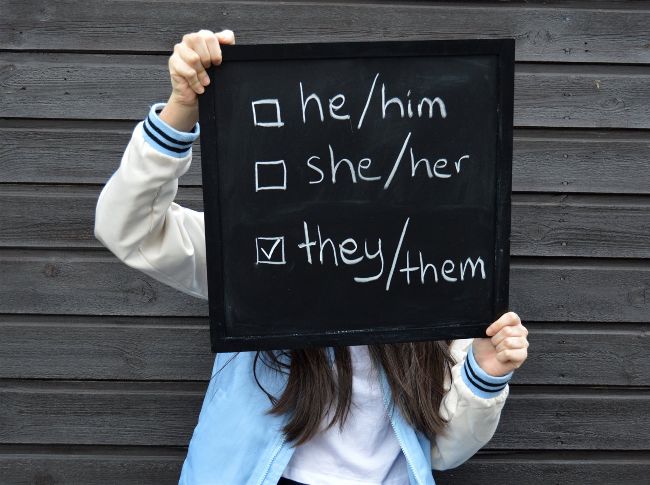How gender inclusive is your salon?
With the global move towards becoming visibly inclusive of all genders gaining traction, including those who don’t conform to male and female, here’s some insight on what it’s like to be a non-binary client and barber

IMAGES: SHUTTERSTOCK
HAVING A BOOKING SYSTEM THAT PROMPTS PRONOUN CHECKING IS A GREAT WAY TO REGULARLY REMIND YOUR TEAM ABOUT HOW IMPORTANT THEY ARE.
I
n an article in HJI, Charlotte Grant-West spoke to Keri Blue, barber and founder of educational platformHuman, who identifies as non-binary and goes by the pronoun ‘they’.
Says Blue: “You may look at your business and think, ‘Hey, we welcome everyone!’ when in reality you may be sending out messages that exclude several people. By not using a diverse range of representative images on your social media. you are actually stopping clients, who may be looking for a welcoming space, from trying you out. Putting ‘LGBTQIA+ and Trans friendly safe space’ in your social bios, your Google listing and website is the simplest way to let people know they are welcome whoever they are and however they identify. When was the last time you used a cisgender female for a ‘male’ hair cut? How about using a guy for long hair?”
Pronoun checking
Blue encourages salon owners to think about their service menu terminology. “Do you deter nonbinary/trans clients from being able to select a service because they have to choose under ‘ladies’ or ‘gents’ when they pick a service with you? This can be really tricky for people who don’t identify as either. Having a booking system that prompts pronoun checking is a great way to regularly remind your team about how important they are.”
A simple inclusivity statement on your website could make that client hovering over the mouse click for an appointment at your business, notes Blue who gives the following example: “In this new era of gender fluidity, we want to make sure our pricing reflects the chosen service and experience level of your Stylist, not the gender you identify as. Not only do we believe that this is a fairer and more inclusive way of doing things, we also feel it’s necessary because of how hair trends are changing.”
Price list
The next step, according to Blue, would be to remove gender where it is not needed. “This means pretty much everywhere. Hair has no gender (I had to get that in somewhere!), so why are we charging our client by their genitals or gender identity?! Haircuts should be priced by a few simple factors: time taken, products used (cost of goods) and skill. Outside of that, I believe there should be no reason why two people of different genders should get charged different prices for their hair.”
Get to grips with the terminology
As Blue points out, it can feel like a minefield out there when it comes to gender, particularly if you have never questioned your own gender. But know this: there are plenty of people out there that have, and they don’t always feel comfortable in salons. Are your staff trained and aware of pronouns? Do they know how to use them? If so, are they being used?”
WE WANT TO MAKE SURE OUR PRICING REFLECTS THE CHOSEN SERVICE AND EXPERIENCE LEVEL OF YOUR STYLIST, NOT THE GENDER YOU IDENTIFY AS.
Here are the basic terms that will help you navigate the world of gender non-conformity.
Cisgendered = when your gender identity matches the gender you were assigned at birth.
Non-binary = not identifying with either male or female genders.
They = the pronoun often used by people who don’t identify with either male or female genders.
But wait, there’s more…
Does your salon have gender neutral toilets? If you want to keep gendered toilets, are there sanitary bins in the men’s? This is a really small and inclusive step that you can implement instantly.
Inclusivity doesn’t just stop at gender identity, it also might mean showing various ages, races or disabilities. Does your marketing speak to everyone? If not, why?
“Even the smallest steps can reassure and support others who may not identify with traditional gender labels. Your influence, on both your team and the industry at large, is very powerful. Some changes may take longer than others to implement, but every alteration you make towards a more inclusive business is confirmation that your salon will not tolerate bias or judgement – and a positive step towards the eradication of gender stereotypes,” concludes Blue.
Source: https://www.hji.co.uk/latest/5-ways-to-be-moreinclusive-in-your-hair-salon/